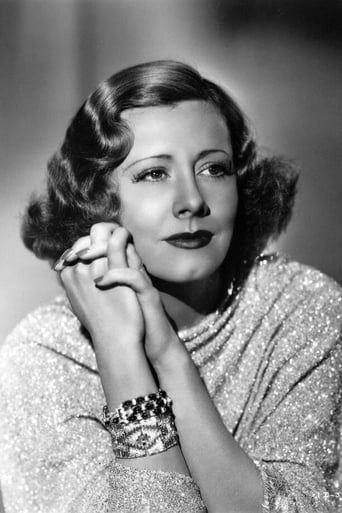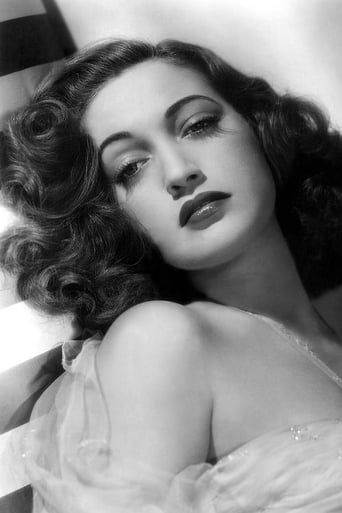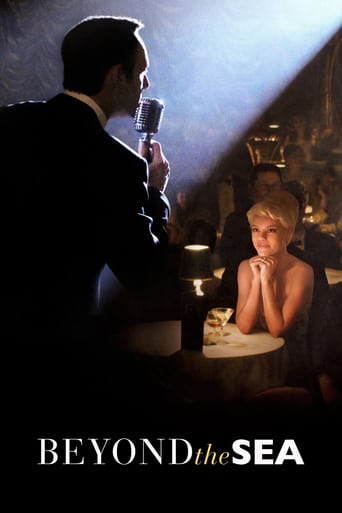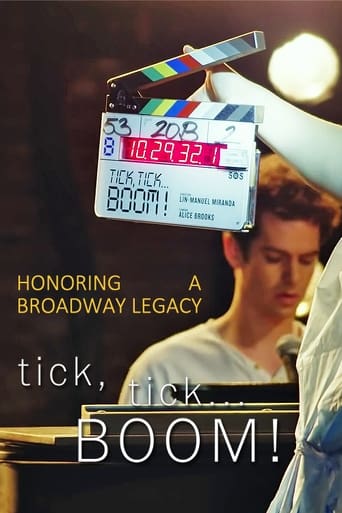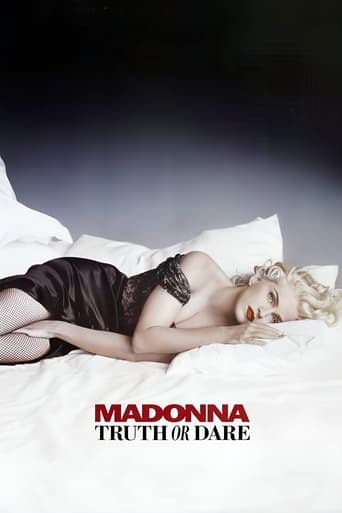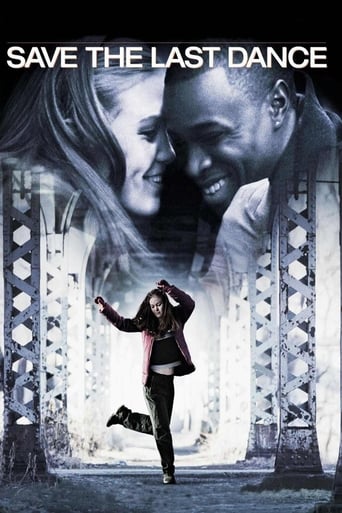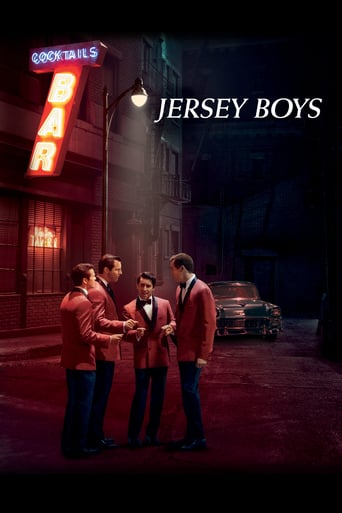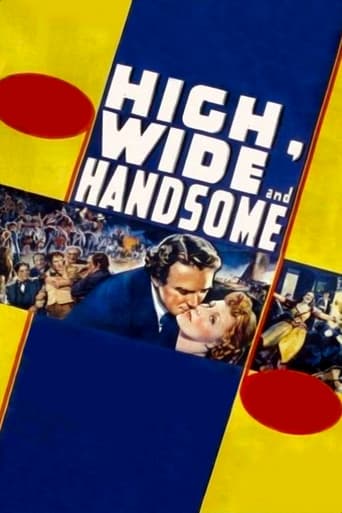
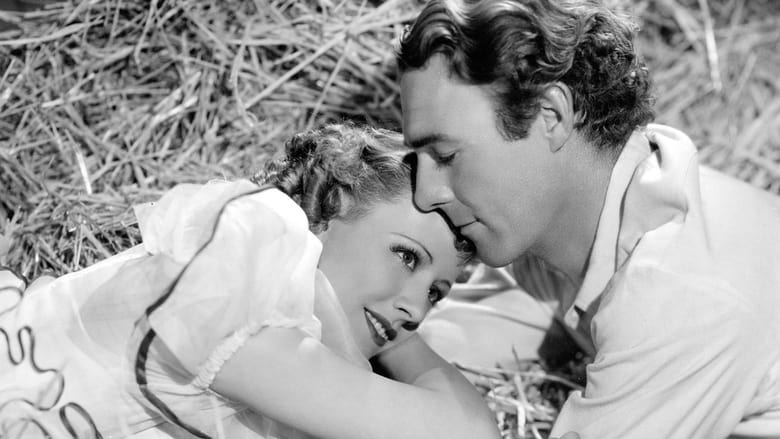
High, Wide and Handsome (1937)
The setting is a small town in 1870s Pennsylvania. Sally Waterson and her father have stopped in town with their traveling medicine show, but when their wagon catches fire, they find themselves stranded. They're taken in by Mrs. Cortlandt and her grandson, Peter, who is trying to set up a pipeline that will supply oil throughout the state. Sally and Peter soon fall in love and marry. Neither their marriage nor Peter's pipe dreams flow too smoothly.
Watch Trailer
Cast
Similar titles
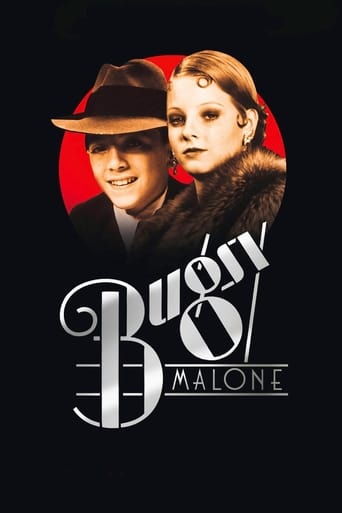
Reviews
Great movie! If you want to be entertained and have a few good laughs, see this movie. The music is also very good,
Blistering performances.
It's funny, it's tense, it features two great performances from two actors and the director expertly creates a web of odd tension where you actually don't know what is happening for the majority of the run time.
Worth seeing just to witness how winsome it is.
There's a lot packed into this film, and it's all top quality. "High, Wide and Handsome" is a musical with some light humor. It's a love story and drama. It's a pioneering story with adventure, intrigue and crime. It's historical for the time and subjects covered, and the authenticity of the costume and sets. About the only thing it's not, but which it is billed as, is a Western. Perhaps any movie that has horses in it, or that's set before the advent of the automobile, is considered Western by Hollywood. But I doubt if many movie fans or anyone would consider a setting in Pennsylvania to constitute a Western movie.This is a superb and entertaining movie. Jerome Kern and Oscar Hammerstein collaborated for the music and lyrics, and Hammerstein helped write the story. It has a complex plot with a few subplots, but the screenplay is excellent and the direction, shooting and film editing enable one to follow the story well. Add an excellent cast and first-rate performances by all, and "High, Wide and Handsome" is a wonderful, interesting, and satisfying film. The title comes from a song that Irene Dunne sings in an early scene. The very talented Dunne has top billing as the female lead, Sally Watterson. She plays the young daughter of a medicine show shyster, Doc Watterson, played by Raymond Walburn. Dunne was nearly 40 years old when this film was made, but appears to be in her young 20s. She didn't get started in Hollywood until she was 32 in 1930, but quickly rose to stardom. Her tremendous talent ranged from drama to comedy, and included a great singing voice, which she used in this film. Randolph Scott also was 39 years old when this film was made, and he seems to be in his youthful early 20s. Within a couple of years, Scott's appearance would change so that in most of his films he comes across as more his real middle age. Both Dunne and Scott give wonderful performances in this film – running the gamut from light humor, to seriousness with very dramatic and intense scenes, and then to tender moments. The supporting cast all excel as well. Alan Hale is out of his usual character and plays the tyrant in this film, but still with a jovial nature. He is Walt Brennan, a railroad tycoon who wants to take over the thriving oil discoveries around Titusville. I think it's interesting that the name of the railroad doesn't appear anywhere in the film. Perhaps Hollywood was getting too close to the truth, where fiction might begin to resemble real history. Charles Bickford is very good as the bitter, mean-spirited Red Scanlon who has been feuding all his life with Cortlandt. Other superb performances are given by most of the supporting cast. Walburn is very good as Doc, and William Frawley is very good as his assistant, Mac. Dorothy Lamour is Molly Fuller, who sings a couple of very good songs. Elizabeth Patterson is superb as Grandma Cortlandt, and Akim Tamiroff was very good in a minor role as Joe Varese. The neighbors and friends of Peter, and some of the circus and carnival players are very good. Much of the historical and pioneering aspects of the film may have been lost on the audiences of 1937, but in the 21st century, those help make this movie a classic to be preserved for posterity. The story takes place in 1858 and one of the main plots of the film concerns the drilling of the first oil wells. In fact, the first producing oil well in North America was established that year (1858) at Oil Springs in Ontario, Canada. And the first well to be drilled successfully in the U.S. was in 1859 at Titusville, PA. That's where this story takes place, only the well driller isn't the historical Col. Edwin Drake, but Peter Cortlandt, played by Randolph Scott. Beside the costumes, and pioneer period sets, the movie has some wonderful scenes of props that were the true items of the period. This is one of only a couple of movies I can recall that showed lighting of public places with huge chandeliers of candles. In a late scene, this film has two such chandeliers with many dozens of candles on each. They are in a circus tent when Sally comes out to sing a song. Men in Indian costumes first set up a small circle stage for her to stand on in the middle of ring. Then, they surround the small stage, and crouch down holding torches to illuminate the stage. Of course, the movie doesn't need the torches for the light in the film, but Paramount gets credit for showing this and other aspects about the time realistically. Here are some other things that the film showed authentically. A wedding portrait took 115 seconds to shoot -- with the photographer counting. Its no wonder that very old photos don't appear clear and sharp before the use of flash photography. When the oil well comes in and oil shoots through the derrick, the wedding party is drenched with oil. And, the building of the pipeline above ground is a touch of reality from the past. The oil discovery and drilling near Titusville, PA, was the birth of the oil industry in America. Here's my favorite lines from the film. For more dialog samples, see the Quotes section under this IMDb Web page for the movie. Mac, "I'll bet Sally will be glad to get away from here." Doc Watterson, "You think so, Mac?" Mac, "Sure. She's always fightin' with that Cortlandt fella. She hates the sight of him." Doc Watterson, "You know human nature, don't you Mac?" Mac, "From A to Z." Doc Watterson, "You must have skipped W. The women come under W."
HIGH HIDE AND HANDSOME is an big expensive Paramount musical directed by Rouben Mamoulian that tries to combine a MGMesque romantic musical production with a Cecil B. DeMille-sized dramatic epic with fairly successful results thanks to a lovely original Oscar Hammerstein III - Jerome Kern score and an excellent cast headed by Irene Dunne, Randolph Scott, Dorothy Lamour, Elizabeth Patterson, Alan Hale, Charles Bickford, Ben Blue, Raymond Walburn, and William Frawley.Irene Dunne stars as a singer/dancer who travels the country as part of pop Raymond Walburn's medicine show. When the medicine show wagon burns up during a stint in Pennslyvania, Dunne, Walburn, and faux Indian entertainer William Frawley are stranded and put up for the night by farmer Randolph Scott and his grandmother Elizabeth Patterson. The trio works their way into Scott and Patterson's heart and stay on as help to earn their keep until Walburn can rebuild an old wagon Scott has given him. Irene and Randolph fall in love and she encourages him with his dream as he drills for oil on the family homestead. When the wagon is built and it's now time to go, the sheepish Scott can't bring himself to propose to Irene but as the wagon leaves and encouraged by grandma, Scott rides off to meet them and fetch Irene back.At their wedding, the oil well hits a gusher and Scott and the local farmers are ecstatic about their potential fortunes. Alas, evil railroad magnate Alan Hale is out to milk them of every penny of profit by excessive fees to ship the oil on his railroad, hoping to make them sellout to him. Scott gets a brainstorm to build a pipeline to move the oil which Hale repeatedly attempts to thwart with his gang. Meanwhile, the Scott-Dunne union is crumbling due to his excessive devotion to the oil wells and when Irene is seen by Randolph singing in a saloon along with her poor friend Dorothy Lamour, a former shanty boat singer whom Irene is trying to help land a job, they have a big fight and Irene leaves to join her father in his current position with a traveling circus. Meanwhile, Hale continues his dastardly plans to ruin Scott's pipe dreams.Irene Dunne is excellent as Sally, the rather elegant medicine show entertainer and Randolph Scott more than holds his own in a superb performance as her dashing bucolic white knight. Irene has several beautiful numbers including the classic "The Folks Who Live on the Hill". Dorothy Lamour is also excellent as the saloon singer who at one point is run out of town by the prudish "good people" of the area and sings the very lovely "The Things I Want". Elizabeth Patterson is always an asset to a movie and has one of her larger film roles here as the tough but loving grandmother and terrific comic support is supplied by William Frawley (who has also has a good song number at the wedding) and Ben Blue.HIGH WIDE AND HANDSOME appears to have been only a modest success at the box office and is one of the least seen Irene Dunne films, as of early 2011 I don't believe it's ever aired on a cable network nor has it ever been released on video or DVD. While not a classic and not without it's flaws (the oil saga with good guys fighting powerful villains has perhaps been done in too many old films and the surprise heroes of the final reel give a rather absurd touch to the climax) it deserves to be seen and it's excellent songs and performances and beautiful set design and cinematography make it a quite memorable movie musical.
Oscar Hammerstein II and Jerome Kern had already made theatre history with "Show Boat," a deathless example of American Theatre, which is still best preserved by Universal's 1935 production, directed by James Whale (now remembered for "Frankenstein"), a wonderful movie that is also the most perfect representation of Irene Dunne, who is amazing in the role of Magnolia. Every time I watch it, I am blown away by the work of the entire cast, which includes many of the staples of the American stage.The following year, Paramount hired Kern and Hammerstein to write them a movie, and indeed, the pair came through, writing some great songs for Dunne to sing, and, on the part of Hammerstein, coming up with a script that can't help but remind the literate of "Oklahoma!" in many ways. It also generated two of Kern's most lovely songs: "Can I Forget You?" and the perennial favorite--of singers if not of audiences--"The Folks Who Live On the Hill".This show is interesting in many ways: one, it takes Dunne back to an earlier time--the 'teens of the twentieth century--in her interpretations, especially of "The Folks Who Live on the Hill," where she elaborately rolls her "r's" and sings in an elaborately formalized manner. It also fails to provide her with an adequate male singing lead, which she certainly had in Allan Jones with "Show Boat."The story presages the ideas that Hammerstein brought to full bloom in his other masterpiece, "Oklahoma" (Masterpiece number one being "Show Boat".) The archetypes are all there: Irene Dunne as Laurie/Magnolia, Randy Scott as Curly (not the weak male lead required by Edna Ferber), Dorothy Lamour as a somewhat muted Ado Annie/Queenie, Charles Bickford as Jud/Frank, Dorothy Patterson as a peppy Aunt Eller/Parthy, Raymond Walburn as a textually removed but otherwise enjoyable Ali Hakim/Captain Andy (although what could go wrong with Charles Winninger in that role?). Add to that Alan Hale as the supremely evil railroad magnate--any comparison would be a stretch, and this is a perfect example of playing against type for Hale, the consummate cheerful sidekick--and you have a delightful Hollywood ensemble company, and I have neglected to mention the beloved Ben Blue, who probably parallels Rubber Face/Will Parker.Talk to me sometime about my ideas anent archetypes: it's for sure--at least as far as I'm concerned--that Hammerstein had some definite "slots" in his scripts not only for particular actors but also for particular characters, and you can find them in subsequent hits like "South Pacific" and "The Sound of Music."My print of "High, Wide and Handsome" was evidently videotaped off a television broadcast: the result is a posterized version whose commercial breaks were edited out; nonetheless, it is a pretty good representation of the film; I don't think that much was missing. Rouben Mamoulian, one of the great directors of film ("Love Me Tonight") and Broadway ("Carousel," need I say more?) added many of his signature effects to this movie, which also may have had some influence from John Ford, but the latter is something I'm flashing on, and I'm not sure what! Please see this sui generis film: it's not a copy of a Broadway hit; it was designed, as were many of Mamoulian's productions, as a film to be appreciated on its own.Paramount should re-release this movie, in the most pristine version available. There are aspects of it that are antiquated, especially since two years later Hollywood brought us "Gone With the Wind" and "The Wizard of Oz," with all their technical accomplishments; but as a musical film achievement, there is a distinctive place for "High, Wide, and Handsome."
Irene Dunne had the good fortune in her singing films to have one of the greatest of American composers writing for her. In her career she did the lead roles in such Jerome Kern classics as Showboat, Roberta, and Sweet Adeline. And also she Kern write songs for the screen for her in Joy of Living and this film High Wide and Handsome. She was for a while known as the Jerome Kern girl of the screen.For reasons I don't understand, except for Showboat she was not given a singing leading man. The story lines were rewritten to give her all the good songs and the leading man none. Not that Donald Woods in Sweet Adeline or Douglas Fairbanks, Jr. in Joy of Living or Randolph Scott in Roberta and High Wide and Handsome had any ambitions to sing, but it might have been nice to have her teamed with someone like Allan Jones again as she was in Showboat.High Wide and Handsome is set in western Pennsylvania just after Edwin L. Drake invented the first practical oil derrick to drill for the stuff. Up to that time oil was considered a nuisance at best, a positive calamity at worst for some poor farmer who had the stuff oozing through to his soil. Randolph Scott is such a farmer who has the idea of marketing for heating fuel. Others agree with him including Alan Hale who is in a part normally reserved for Edward Arnold. He's the boss of the railroad and who would be shipping the stuff and at the rate he determines, but him only. Not beaten Scott conceives the idea of the first oil pipeline and then its a fight to the finish with the Hale and the railroad. By the way in real life this is how John D. Rockefeller cornered the oil market and gave the Rockefeller family the wealth it enjoys today.Irene Dunne is in a medicine show that breaks down and she, Raymond Walburn and William Frawley are given shelter by Scott and his grandmother Elizabeth Patterson. Of course the usual boy/girl stuff happens.Scott's an earnest of guy, but a bit of a prude as well. Later on when Dunne aids another entertainer in trouble, Dorothy Lamour, Scott and she break up when he finds the two of them trying to put over an act in a saloon to get her hired.Two very big songs for Jerome Kern and Oscar Hammerstein, II came out of High Wide and Handsome both sung by Dunne, Can I Forget You and The Folks Who Live On The Hill. Again this was a case of one hand washing the other as Paramount no doubt convinced the leading singer in America who by no coincidence was a Paramount contact player to record them and plug them on his radio show. Bing Crosby's records of them are classic and they sold a few platters back in the day. In fact why didn't they have Bing in this film? It certainly had more of a budget than the musicals Paramount was giving him. Other villains in High Wide and Handsome are Charles Bickford and Irving Pichel. Bickford is just a plug ugly who does Hale's dirty work and probably would pay Hale to do it for him as he and Scott hate each other and that's made clear right at the beginning of the film. Irving Pichel plays a strange Puritan type individual, self appointed keeper of the community morals. His was a strangely underdeveloped character in the script that Oscar Hammerstein, II wrote.Rouben Mamoulian who directed his fair share of musicals on screen and on the stage did a good job with his cast. And you can never go wrong listening and singing Jerome Kern's wonderful songs.
